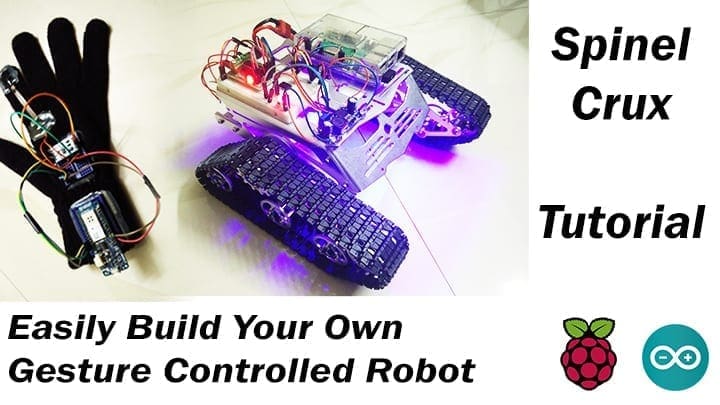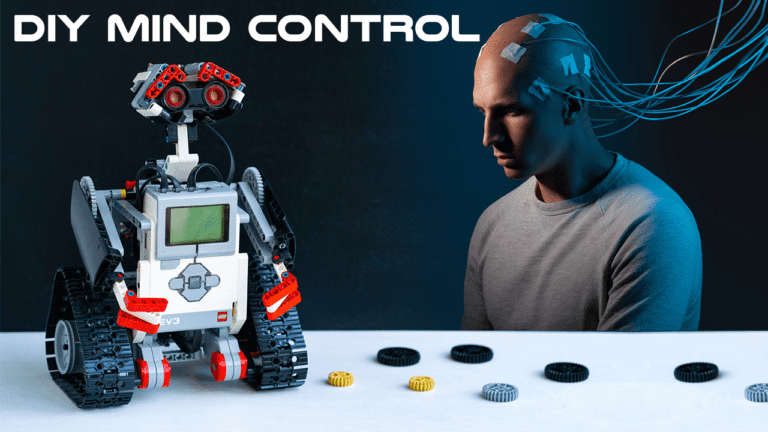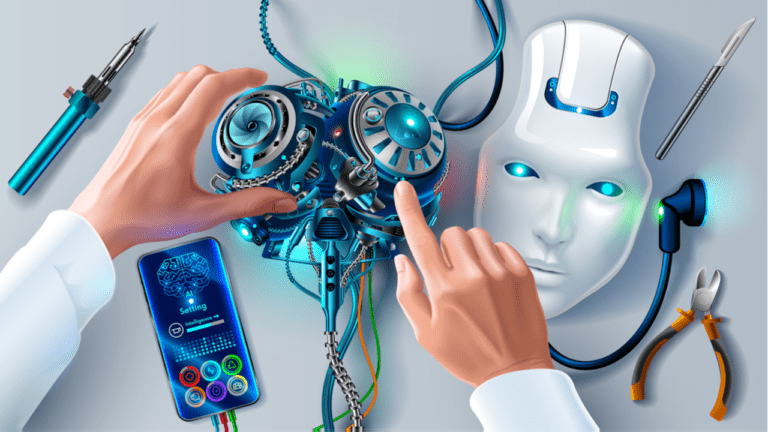Robotic Revelations: 36 Fun Facts About the World of Robots 2024
The world of robotics is not just about technological advancements and scientific breakthroughs; it’s also filled with intriguing and fun facts that showcase the lighter side of this cutting-edge field. From the origins of the word ‘robot’ to the extraordinary capabilities of modern machines, the realm of robotics offers a fascinating blend of history, innovation, and surprising trivia. As we explore fun robot facts, we journey into a world where creativity meets technology, leading to some of the most interesting and whimsical aspects of robots and their impact on our world, both in reality and in our imaginations.

Leonardo da Vinci’s Mechanical Knight
In 1945, Leonardo da Vinci designed a mechanical knight, illustrating his futuristic vision and early concepts in robotics. From human-like to animal-like, da Vinci’s robotic creations cover a wide range. The Self-Propelled Cart, created by Leonardo in 1478, is regarded as the earliest robotic vehicle ever created
Care Robots in Japan
The Japanese government spends one-third of its money on creating carebots. For instance, Toyota created Robina, a nursing assistant robot.
The First Robotic Accident
An employee at a Japanese Kawasaki factory was crushed by a robotic arm in 1981, marking the first instance of robot homicide known to exist. It was, however, claimed to be an accident.
“There will be no job people can do better than robots” – Hans Moravec’s Robotic Prediction
In a 1995 interview conducted by Charles Platt for Wired magazine, Hans Moravec, a professor at Carnegie Mellon University’s Robotics Institute and the author of “Mind Children: The Future of Robot and Human Intelligence,” made a prediction. Moravec foresaw that by 2040, advances in networking technology would lead to a situation where robots would outperform humans in every job. He also speculated that machine intelligence would eventually reach a subatomic scale, eventually surpassing human capabilities while retaining a positive regard for humanity as its creator.
U.S. Marine Corps Tests Robotic Dog with Anti-Armor Weaponry
The U.S. Marine Corps has been experimenting with a robotic dog armed with a simulated M72 anti-armor rocket launcher, showcasing the military’s increasing focus on equipping unmanned quadrupedal systems for combat roles. The tests were conducted by the Marine Air Ground Task Force Training Command’s Tactical Training and Exercise Control group at the Marine Corps Air Ground Combat Center in Twentynine Palms, California, in September.
MIT’s Robot computer – RoCo
RoCo is the first robotic computer developed, uniquely designed to move its monitor in a manner that subtly expresses and responds to the user’s physical posture. This innovative approach aims to engage and motivate the user through the monitor’s dynamic movements.
Nerekhta Robots
The Nerekhta Robot, an unmanned ground vehicle, is being developed for tasks in civilian and military sectors. Its design is for various repetitive, unpleasant, or hazardous tasks.
Mark Roshiem Created a Prototype of da Vinci’s Robotic Knight
In 2002, Mark Rosheim created a working model of Leonardo da Vinci’s mechanical knight, following da Vinci’s original designs and notes. This project confirmed that da Vinci’s design was practical and functional. Rosheim’s experience in robot design at NASA was greatly influenced by da Vinci’s pioneering work in mechanics.
Currently, over a million industrial robots are in use, with about half of them located in Japan
By 2022, nearly half of the world’s industrial robots were made or designed by Japanese companies. The demand for these robots from Japanese manufacturers reached a new high of $7.35 billion in 2022, showing a slight increase of 1.6% compared to the previous year.
Wine-bot
Developed by NEC System Technologies and Mie University in Japan, the “Wine-bot” is a notable invention in the field of “optical tongue-robot” technology. This robot, roughly the size of a large wine bottle, combines a microcomputer and an optical sensor. It analyses wine by using just 5 ml of the sample. In mere seconds, the Wine-bot employs infrared rays to identify light wavelengths absorbed by the wine, enabling it to quickly determine the wine’s specific flavor components.
Over 20 million robots have been sold worldwide by the company iRobot
Established in 1990 by roboticists from the Massachusetts Institute of Technology, iRobot has achieved global sales of over 40 million robots. The company is renowned for creating some of the most influential robots in the industry and has a history deeply rooted in innovative developments.
Ancient Pegion Robot
Archytas, a multifaceted ancient Greek born in 428 BC, is known not only as a philosopher but also for his contributions to mathematics, astronomy, statecraft, and military strategy. He is most notably remembered for creating the Flying Pigeon, considered the earliest self-propelled flying device.
Cyborg Experiments with Prof. Kevin Warwick
Project Cyborg involved Professor Warwick receiving an implant in his left arm to establish a direct connection between his nervous system and a computer.
Mini Me Robot
Australian researchers are working on developing a tiny robot that can replicate the swimming motion of E. coli bacteria. This micro-sized robot is intended to be injected into a patient for internal biopsy procedures.
Robot with an Artificial Gut
The Ecobot III, created by the Bristol Robotics Laboratory, powers itself by consuming a sewage-based mixture, using its nutrients for energy and expelling the waste. It also intakes water for energy. The robot locates and consumes the nutrient blend, which is then broken down by bacteria in its system, consisting of 48 microbial fuel cells arranged in two layers.
Killer Robot
Professor Stuart Russell of the University of California claimed that killer robots exist and should be eliminated. In a Nature journal article, it’s noted that two projects initiated by the US Defence Advanced Research Projects Agency (DARPA) could pave the way for the use of killer robots. These developments might challenge the guidelines of the Geneva Convention if they are successfully implemented.
Robots Using Bacteria-filled Fuel Cells
From rotten apples and dead flies, Chris Melhuish of the Bristol Robotics Laboratory built robots that generate electricity using fuel cells brimming with bacteria. Autonomous foraging robots are the ultimate goal.
Elektro – The First World’s Humanoid Robot
Elektro was a human-like robot created by Westinghouse Electric Corporation in Ohio between 1937 and 1938. Standing at seven feet tall and weighing 265 pounds, Elektro could walk, talk with a vocabulary of 700 words, smoke cigarettes, inflate balloons, and move its head and arms, all controlled by voice commands. It was built with a steel framework for gears, cams, and motors, and had an outer shell made of aluminum. Elektro had special photoelectric “eyes” that could identify red and green lights. It was first displayed at the 1939 New York World’s Fair and made a second appearance in 1940, alongside Sparko, a robotic dog capable of barking, sitting, and begging.
LS3 – Legged Support System
DARPA is creating a four-legged robot, called the Legged Squad Support System (LS3), to help soldiers and Marines carry heavy loads. This robot aims to be able to carry up to 400 lbs, move easily over rough ground, and work closely with troops like a trained animal with its handler. The goal is to reduce the physical burden on military members.
Blendo Robot
Jamie Hyneman, famed for co-hosting “Myth Busters,” designed Blendo, a pioneering robot with a distinctive full-body spinner weapon. This design later became popular in the Robot Wars competitions. Blendo made its debut in the 1995 Robot Wars event held in San Francisco, showcasing its unique combat style.
Battery Detector Robot
The robot, specifically built for detecting used batteries, aims to prevent environmental harm. It features a standard ABB robotic arm, which is outfitted with advanced sensors and specialized tools for picking up batteries, ensuring they are recycled properly. This helps in reducing environmental risks associated with battery disposal.
Icefin Robot – Finds new circulation pattern in Antarctic ice shelf
Cornell University’s research used the Icefin robot to explore underwater at the Ross Ice Shelf. This robot made the first detailed 3D map of the area where the ice shelf meets the sea, known as the grounding zone. It found new water patterns and ice shapes, helping us understand how ice shelves melt and freeze. This is important for predicting sea-level rise, especially in areas hard to study directly.
Nano-robot
A Nano-robot is a tiny robot, about 50-100 nanometers wide, designed for precise drug delivery in the human bloodstream and to assist in delicate surgical operations alongside traditional surgery.
1980 – “eye-opener” for the Robot Industry.
Initially, the car industry was the primary market for robots, accounting for 70% of their demand in tasks like spot welding, painting, and dispensing. The year 1980 marked a significant turning point for the robot industry.
Raptor
The Institute of Science and Technology in Korea developed a robot called Raptor, designed to run faster than a human at speeds up to 46 kilometers per hour. This robot is modeled after the Velociraptor, a dinosaur known for its speed.
Sophia Robot – First Robot Citizen
Sophia, a highly advanced humanoid robot, was developed by Hanson Robotics and first activated in 2016. Known for its human-like appearance and sophisticated artificial intelligence, Sophia can mimic facial expressions, engage in conversations, and has been granted citizenship by Saudi Arabia. Sophia’s design and capabilities have made her a popular figure in discussions about AI and robotics, often featured in interviews and public events worldwide.
Robophobia
Robophobia refers to the irrational fear or dislike of robots, androids, or other artificial intelligence systems. It often arises from concerns about the unknown capabilities of these technologies and their potential impact on human society and jobs.
Fanuc and Unsupervised 30 Days
Fanuc, a Japanese company, that specializes in robotic manufacturing, is capable of operating autonomously for up to 30 days without supervision. They maintain that this approach enhances productivity while simultaneously reducing operational costs. Notably, Fanuc has been successfully implementing this strategy since 2001.
Robot Member British Houses in the next 50 years.
Recent research indicates that 60% of British citizens believe that within the next 50 years, every household will have a robot. This reflects a growing expectation among the public about the increasing role of robotics in everyday life, foreseeing a future where robots are common in domestic settings.
Self-driving Mining Robots
Self-driving mining robots are significantly transforming the mining industry. These autonomous machines enhance efficiency, safety, and productivity in mining operations, reducing the need for human intervention in hazardous environments and streamlining the extraction process. Their impact is seen in the way they revolutionize traditional mining methods, leading to a more technologically advanced and sustainable industry.
Asimo – World’s Most Expensive Robot
Asimo, developed by Honda, is often cited as one of the world’s most expensive robots due to its advanced technology and development costs. While Honda has not publicly disclosed Asimo’s exact price, it’s estimated that the development cost was over $1 million. Asimo’s sophisticated design, which includes human-like movement and artificial intelligence, contributes to its high value and status in the field of robotics.
Most Computerized Robot Voices are Female
Most computerized robot voices are often designed to be female, a choice influenced by various factors including user preference and social perceptions. Studies suggest that female voices are generally perceived as more calming and welcoming, which is why they are preferred in customer service and virtual assistant roles. This trend reflects broader societal norms and preferences, influencing the design and interaction style of voice-activated robots and virtual assistants.
Gynoid
A gynoid is a humanoid robot that is designed to resemble a human female, often used in various fields like service industries, entertainment, and research. Unlike typical industrial robots, gynoids are created with an emphasis on aesthetics and human-like interaction, focusing on replicating female appearance and behavior. They play a significant role in advancing human-robot interaction studies and are also used to explore the social and ethical implications of robots in daily life.
Janken Wins Rock Paper Scissors 100% of the Time
The Janken Robot, developed by researchers in Japan, is engineered to win the game of Rock-Paper-Scissors with a 100% success rate. This feat is achieved using high-speed vision and processing technology, allowing the robot to recognize and respond to the human player’s hand shape within milliseconds. The robot’s unbeatable performance in this simple game showcases advancements in real-time sensor and motor technologies, highlighting potential applications in more complex tasks requiring rapid response times.
The Origin of ‘Robot’ in Capek’s ‘Rossum’s Universal Robots
Karel Capek’s 1921 play, ‘Rossum’s Universal Robots,’ marked the first use of the term ‘robot’ to describe chemically crafted beings resembling humans, each with the productivity equivalent to 2.5 men.
The Definition and Study of Robots in Robotics
Originating from the Czech word ‘robota’ meaning ‘drudgery,’ a robot is a machine controlled by computer programs, capable of executing tasks. Programmable for diverse functions, these machines are the focus of the field of Robotics, dedicated to their study and development.
Conclusion
In conclusion, the world of robotics, peppered with amusing and enlightening facts, reveals a fascinating tapestry of human ingenuity and technological progress. From their etymological roots to their diverse applications, robots not only embody the pinnacle of human innovation but also reflect our enduring curiosity and creative spirit. As we continue to explore and expand the boundaries of robotics, these fun facts serve as reminders of the whimsical and remarkable journey of robots, from mere concepts in science fiction to integral parts of our everyday lives and future aspirations.




